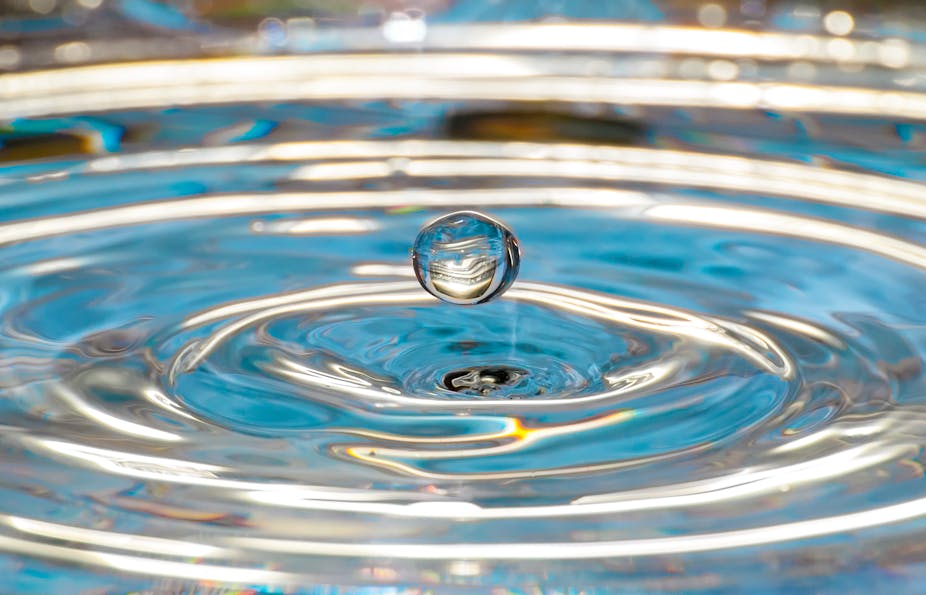When I was playing “splash rocks”, I noticed that when I threw the rock into the river it made a circle shape, which got bigger. How does it make the ripple? Why do the circles spread out further and further? Why do they stop? – Rowan, aged six, UK.
Hi Rowan, these are good questions, and a fun experiment to do.
When you throw a rock into a river, it pushes water out of the way, making a ripple that moves away from where it landed. As the rock falls deeper into the river, the water near the surface rushes back to fill in the space it left behind.
The water usually rushes back too enthusiastically, causing a splash – and the bigger the rock, the bigger the splash. The splash then creates even more ripples that tend to move away from where the rock went into the water.
When water is in its calmest, lowest energy state, it has a flat surface. By throwing the rock into the river, you have given the water some energy. That causes the water to move around, trying to spread out the energy so it can go back to having a still, flat surface.
This follows a powerful principle of physics, which is that everything seeks to find a state where its energy is as small as possible.

Curious Kids is a series by The Conversation, which gives children the chance to have their questions about the world answered by experts. If you have a question you’d like an expert to answer, send it to curiouskids@theconversation.com. We won’t be able to answer every question, but we’ll do our very best.
One way energy can move around is by forming waves. For example, the waves you see at the beach are formed by energy from the wind. Light and sound also move in waves, though we can’t see that directly. And the ripples that you see in the river are small waves carrying away the energy from where you threw the rock.
Up and down
You might already know that everything you can touch is made up of lots of tiny molecules, which are themselves made up of even smaller parts called atoms.
Read more: Curious Kids: is everything really made of molecules?
Water is also made of molecules. But during a ripple, the water molecules don’t move away from the rock, as you might expect. They actually move up and down. When they move up, they drag the other molecules next to them up – then they move down, dragging the molecules next to them down too.
That’s what creates the peaks and troughs you see on the surface of the water. And that’s how the ripple travels away from your rock – a bit like a human wave around a stadium.
Dragging neighbouring water molecules up and down is hard work, and slowly uses up energy, so the ripples get smaller as they get further away. Eventually, the ripples use up all the energy from the rock and the splash, and shrink until we can no longer see them.
Rippling out
Ripples often spread out in circles, but this isn’t the only possibility. If you throw a stick into the water it will create straight ripples on the sides, and round ripples near the ends. So your rock probably made circular ripples because the rock itself was quite round.
But something else is happening too: different waves move at different speeds. Waves with a lot of energy move more quickly. For example, really big tidal waves, or tsunamis, race across the ocean as fast as a plane flies (up to 800 kilometres per hour).
When you throw a stick into the water, the ripples from the middle of the stick eventually catch up with the ripples from the ends, because of the different ways they spread out. So far away from the stick, the ripples are round … just like they were for your rock.
Children can have their own questions answered by experts – just send them in to Curious Kids, along with the child’s first name, age and town or city. You can:
- email curiouskids@theconversation.com
- tweet us @ConversationUK with #curiouskids
- DM us on Instagram @theconversationdotcom
Here are some more Curious Kids articles, written by academic experts:

